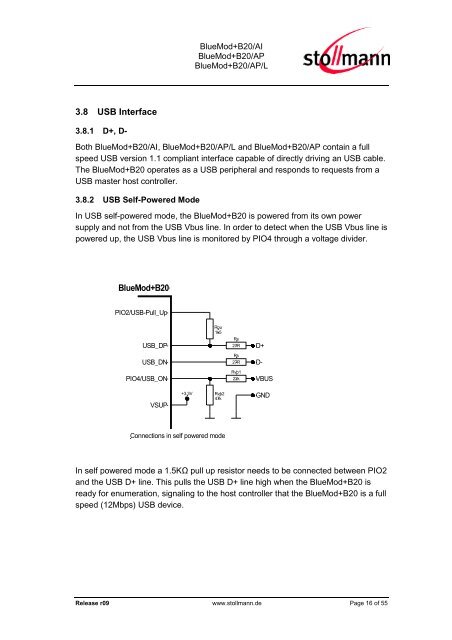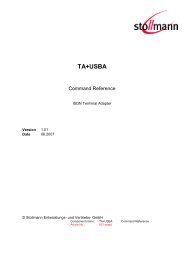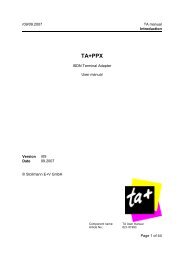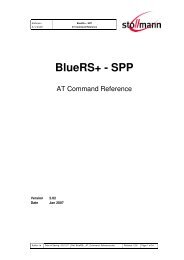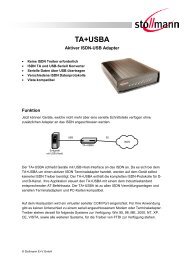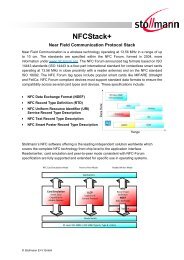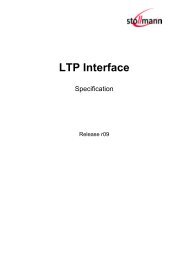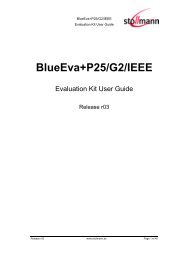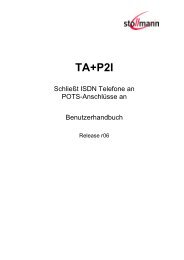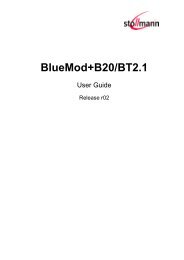Hardware Reference - Stollmann
Hardware Reference - Stollmann
Hardware Reference - Stollmann
Create successful ePaper yourself
Turn your PDF publications into a flip-book with our unique Google optimized e-Paper software.
BlueMod+B20/AI<br />
BlueMod+B20/AP<br />
BlueMod+B20/AP/L<br />
3.8 USB Interface<br />
3.8.1 D+, D-<br />
Both BlueMod+B20/AI, BlueMod+B20/AP/L and BlueMod+B20/AP contain a full<br />
speed USB version 1.1 compliant interface capable of directly driving an USB cable.<br />
The BlueMod+B20 operates as a USB peripheral and responds to requests from a<br />
USB master host controller.<br />
3.8.2 USB Self-Powered Mode<br />
In USB self-powered mode, the BlueMod+B20 is powered from its own power<br />
supply and not from the USB Vbus line. In order to detect when the USB Vbus line is<br />
powered up, the USB Vbus line is monitored by PIO4 through a voltage divider.<br />
BlueMod+B20<br />
PIO2/USB-Pull_Up<br />
USB_DP<br />
Rpu<br />
1k5<br />
Rs<br />
27R<br />
D+<br />
USB_DN<br />
Rs<br />
27R<br />
D-<br />
PIO4/USB_ON<br />
Rvb1<br />
22k<br />
VBUS<br />
VSUP<br />
+3.3V<br />
Rvb2<br />
47k<br />
GND<br />
Connections in self powered mode<br />
In self powered mode a 1.5KΩ pull up resistor needs to be connected between PIO2<br />
and the USB D+ line. This pulls the USB D+ line high when the BlueMod+B20 is<br />
ready for enumeration, signaling to the host controller that the BlueMod+B20 is a full<br />
speed (12Mbps) USB device.<br />
Release r09 www.stollmann.de Page 16 of 55


